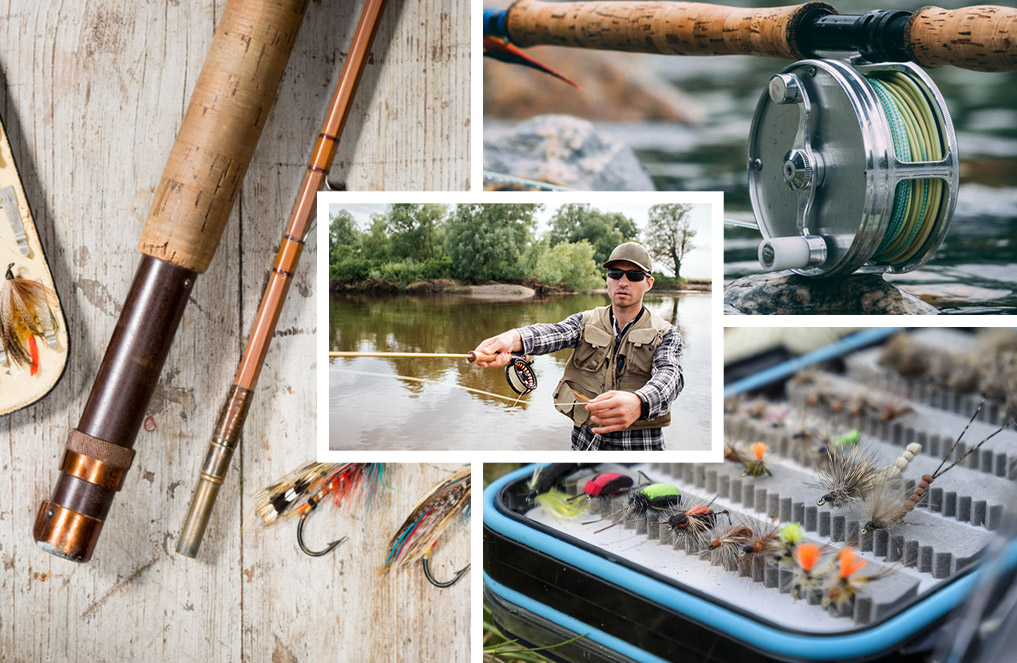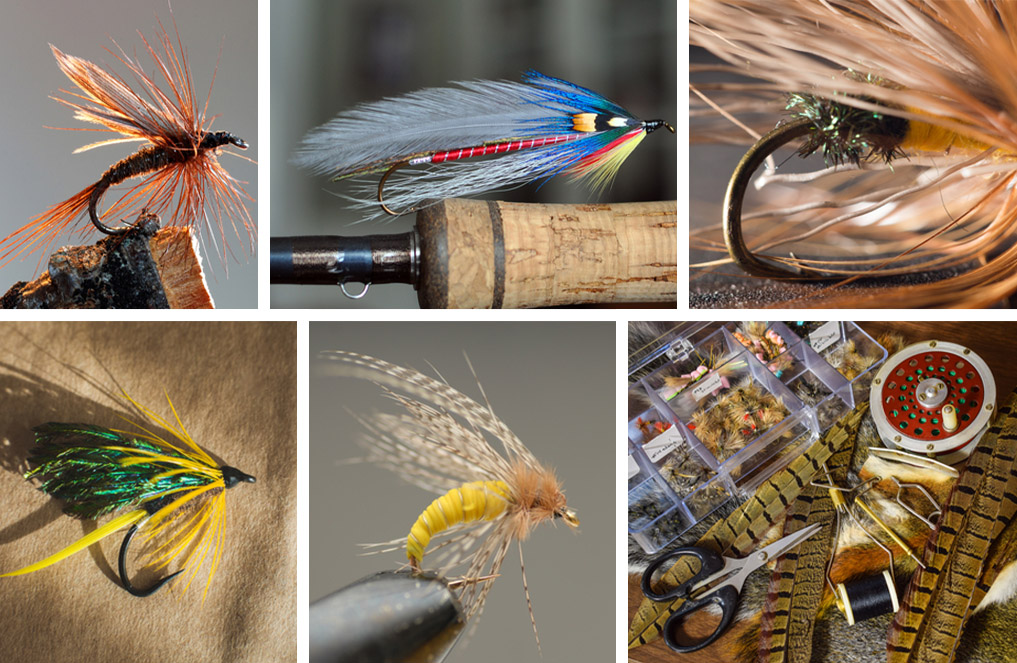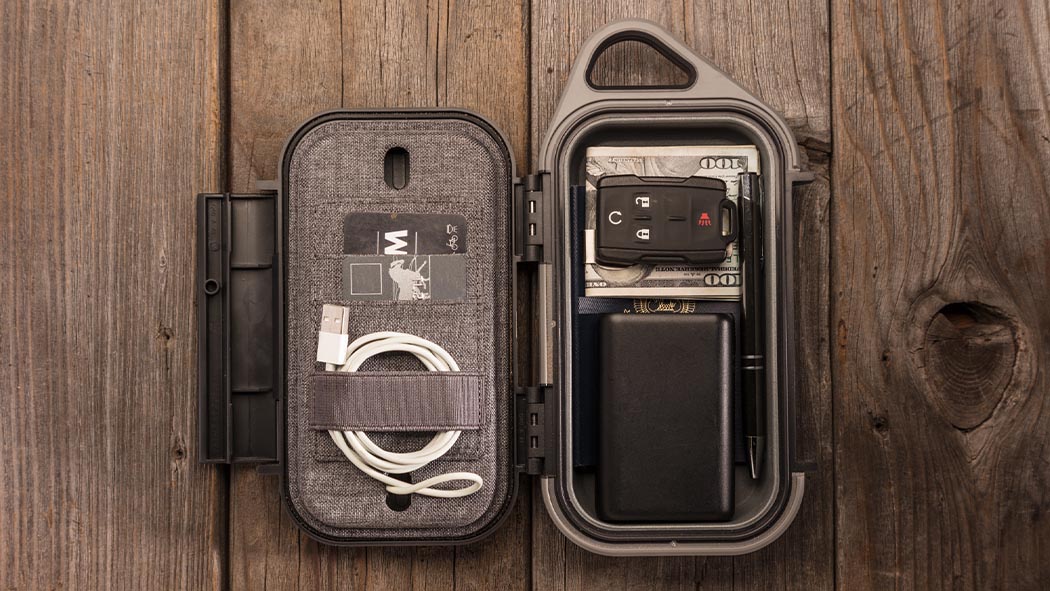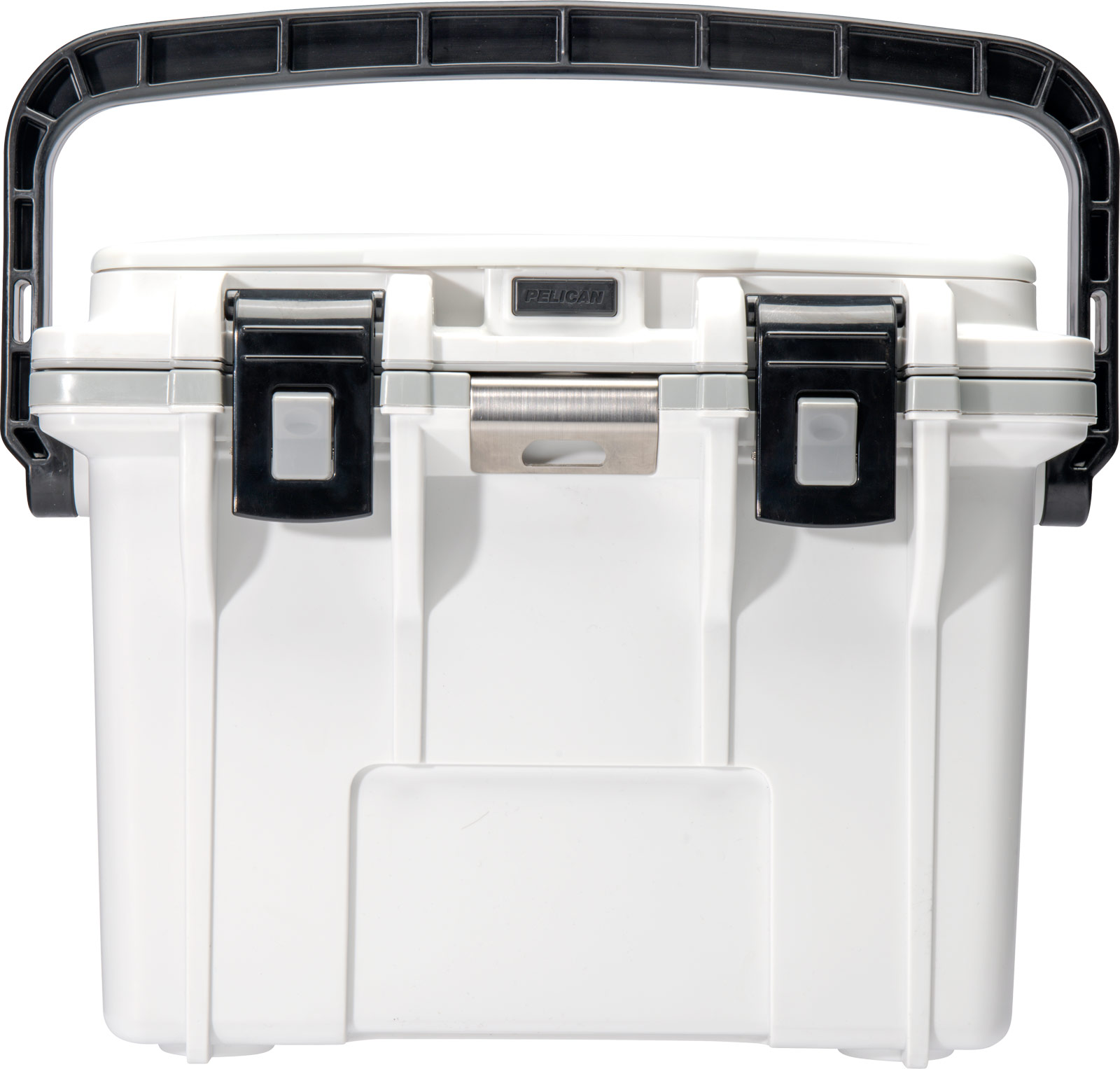How to Fly Fish: A Guide to Getting Started
May 24, 2021

Many of us who have fished with a spinner rod for years inevitably become interested in learning how to fly fish. There’s just something poetic about watching an experienced fly fisher cast a fly into the water at sunset, their silhouette illuminated by a red sky and their smooth casting motion on full display.
Although fly fishing may look effortless, there’s a little more to this amazing sport than meets the eye. But don’t let that scare you away from learning how to fly fish. Once you get the basics down, you’re sure to be as addicted to the sport as any experienced fly caster. In this guide, we’ll explain everything you need to get started in fly fishing.
Fly Fishing Gear: Four Essentials You Need
One of the most common misconceptions about fly fishing is that it’s a difficult sport to get into, to which we say: hogwash. Sure, you can’t just grab a fly rod and expect to be a pro angler right away, but you can easily learn the basics in a matter of minutes.
As with most outdoor sports, you need to have the knowledge and the right gear to become a successful fly caster. The knowledge will come with time and experience. For now, let’s break down the basic fishing gear you’ll need to get started in fly fishing.

1. Fly Rod
The first step to learning how to fly fish is selecting the right fly rod. One important thing you need to understand about fly rods is that they’re categorized by weight (e.g., 1WT = one weight). This weight relates to the species you’re going to be fishing for.
For instance, if you’re interested in fishing for trout or doing some light-duty bass fishing, you’d probably choose a 5WT or 6WT rod. In general, the bigger the fish, the heavier the weight rating of your fly rod should be.
Fly rods also come in various lengths. Shorter rods are generally better suited to small creeks and rivers with obstacles you need to cast around, while longer rods are ideal for large bodies of water.
The vast majority of fly anglers will start out with a 4, 5 or 6WT fly rod measuring 8-½ to 9 inches in length. If you need help narrowing down your choice between a 4, 5 or 6WT, don’t hesitate to consult with a local fly shop for advice.
2. Fly Reel
A fly reel may seem like a boring piece of fishing equipment, but don’t be fooled—a quality fly reel is a thing to be treasured. A great fly reel can be the difference between successfully reeling in a big one or losing your fish.
A fly reel serves three basic functions. In addition to storing and retrieving your fly line, it also provides some resistance (aka, drag) when you’re fighting a fish. Many, but not all, fly reels come with an adjustable drag system.
There are two main types of drag systems: a disc drag and a click-and-pawl. Most reels that are sold today have disc drag systems, but the click-and-pawl reel is generally less expensive and is better suited for small fish species in freshwater streams.
Simple rule: Get whatever you can reasonably afford and make sure that your reel’s weight matches your rod and line weight.
3. Fly Line System
The most important piece of fishing equipment you need to fly fish is your fly line system. The fly line system consists of three major components: the backing, the fly line and the leader.
- Backing: The backing is a tightly-braided string that acts as a buffer between the fly line and the reel. It provides backup-length for when a fighting fish makes a long run. Unless you’re going saltwater fishing for big species, 50 to 100 yards of backing in 20-pound test strength is more than enough.
- Fly Line: If there is one single item you decide to splurge on with your fishing equipment, let it be your fly line. The weight of your fly line is what you’re moving back and forth with your fly rod. For a balanced fly fishing rig, you should match the number of your fly line to the numbers on your fly rod and reel. However, some fly anglers would argue that overlining and underlining a fly rod has its merits.
- Leader: The leader is the tapered connection between your fly line and your fly. It starts out with a thicker butt section and ends with the last diameter of your leader, called a tippet. As a general rule, you should keep your leader the same length as your fly rod. So if you have a 9-inch fly rod, you should have a 9-inch leader. There are exceptions to the rule, but as a beginner, this is all you need to know to get out on the water.
4. Flies
Now for the fun part—fly selection! When it comes to choosing a fly, it helps to know the basic categories of flies and their nomenclature. Flies can be broken down into the following categories:
- Dry Flies: Dry flies float on the surface of the water. This type of fly typically imitates an adult insect (e.g., mayflies, grasshoppers).
- Wet Flies: Wet flies are flies that are fished below the surface. They imitate aquatic insects in the nymph-stage (e.g., fish eggs, worms).
- Streamers: Streamers are larger wet flies that imitate baitfish, crayfish and large aquatic insects. Because streamers often attract larger, predatory fish, you can typically expect a more violent strike.

Don’t worry! You don’t need a PhD in entomology to choose the right fly at the right time. In truth, it’s really more about reading the river and observing what the fish are eating—that, along with experimentation and fly presentation.
Basic Accessories
Last but not least, it’s time to choose some basic fly fishing accessories that you need to get out on the water. Here’s what we recommend:
- Nippers: Nippers are mainly used for trimming the tag ends when you tie a fly to your tippet. Be sure to get a pair that is specifically made for fly fishing. The reason is because fly fishing nippers tend to come with a hook-eye cleaning needle that is useful for poking through the tippet.
- Forceps: Forceps, aka hemostats, are a must-have in any fly fisher’s gear. You’ll use these for a variety of reasons, such as pinching barbs on flies to make them barbless, holding flies while you tie a knot and removing hooks from fish.
- Fly Floatant: Fly floatant is a lightweight paste that you apply to your dry flies to keep them waterproof and buoyant.
- Split Shot: If you’re fishing with streamers and wet flies, you’re probably going to want to add some split shot. A split shot is just a sinker (i.e., it makes your fly sink).
- Strike Indicator: Again, if you’re fishing beneath the surface of the water, you also want to have a strike indicator—aka, a bobber.
- Fly Fishing Vest: Where are you going to put all these fly fishing accessories, anyway? The answer: your fly fishing vest. It can also be helpful to attach a hard case to your vest to hold your keys, phone and other valuables.

- Polarized Sunglasses: Don’t overlook this one! Polarized sunglasses offer some critical eye protection while you have a fly whizzing past your face. They also reduce glare from the surface of the water, allowing you to see fish more easily.
- Waders: Waders are the waterproof boots and pants get-up that fly fishers wear to avoid getting soaked when fishing in a stream. You don’t need these as a beginner—fishing from a bank will be fine when you’re just starting out—but you might want to get them later on in your fly fishing career.
- Cooler: Is it truly considered fishing if you don’t have a reliable cooler stocked with ice cold beer with you? All jokes aside, you’ll definitely need a quality cooler to keep your fish (and, yes, your beer) nice and cold. And if you’re reeling in big game fish or simply hauling around a lot of food and drinks, consider using a cooler with wheels to make transport a little easier.
How to Fly Fish: Casting Basics
Once you have all the necessary fly fishing equipment, it’s time to learn how to cast a fly rod. Unlike conventional fishing where you cast the lure and the line follows, fly fishing is the exact opposite—you cast the line and the fly follows.
For beginners, it’s best to start with the basic fly cast, or the overhead cast. Below, we’ll discuss the best stance, grip and casting motion for beginners. Tip: When learning how to fly cast for the first time, it’s helpful to start out practicing on land—ideally, a place free of bushes and trees.
Tip: When learning how to fly cast for the first time, it’s helpful to start out practicing on land—ideally, a place free of bushes and trees.

Stance
Stand with your non-dominant foot forward, as if you were about to throw a baseball. This stance will accomplish two things. First and foremost, it will make you more stable. If you’re on a boat or the bank of a stream, it’s simply going to be a safer stance.
This stance also allows you to turn more easily at your torso while you cast, which is critical because you need to be watching your back cast. Watching your back cast will help identify and correct your mistakes.
Grip
With your dominant hand, grip the fly rod with your thumb on the top of the cork grip. Curl the rest of your fingers on your dominant hand around the pole.
Make sure that your thumb is at the very top—not the middle. This will give you more control and tip speed.
As a rule, your rod—and, therefore, your line and leader—will go in the direction your thumb is pointing. So if your thumb is pointing down when you cast, that’s exactly where your rod is going to go.
Casting Motion
When your line is traveling to a stop in a back cast and a forecast, it’s important to have a brief pause to let your line roll out behind you. Right as your leader is about to straighten out in your back cast, you can begin your forward cast.
While making this transition, you need to get your wrist motion down. A good way to think about it is like throwing a dart. You don’t want to do it too forcefully—just a nice, quick flick. Keep your elbow stationary and use your forearm to direct the rod. Let the rod do all the work.
Once the line hits the water, put the extra line under your forefinger. This will give you more control when a fish hits.
The best way to perfect your cast is by checking into your local fly fishing store. Many stores have free or inexpensive fly casting classes and workshops that will help you get the motion down pat.
Getting Out on the Water
Don’t let all the technical jargon and fancy fly fishing equipment scare you away from trying your hand at fly fishing. You don’t need to have high-tech gear or in-depth knowledge of insect hatch cycles to get started. Does that stuff help? Sure. But in truth, any day out on the water is guaranteed to be good, even if you don’t catch a single thing. As world-class fly angler A.K. Best once said: “The fishing was good; it was the catching that was bad.”

SIGN UP FOR EXCLUSIVE OFFERS
Sign up for our newsletter and get exclusive access to new product launches, special offers and much more.
RELATED BLOGS















